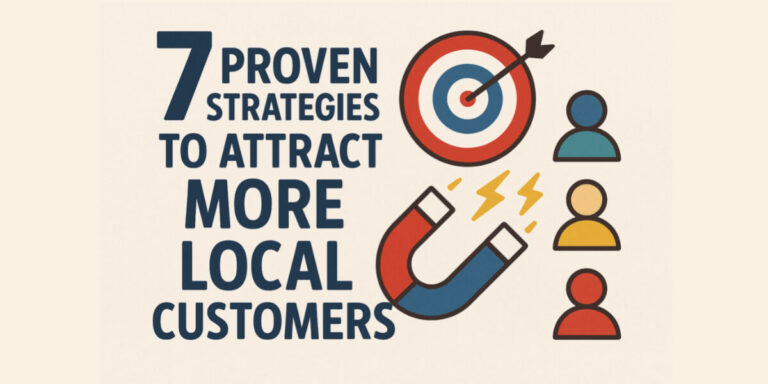
You’ll double your sales results by implementing these five proven lead conversion strategies. First, create a seven-touch follow-up sequence over three weeks, providing unique value at each touchpoint. Second, perfect your value proposition by connecting specific pain points to clear benefits using conversational language. Third, leverage social proof through customer testimonials and case studies to build trust. Fourth, create authentic urgency with legitimate deadlines and early-bird pricing. Finally, qualify leads properly using scoring systems to focus on high-converting prospects. Master these techniques to transform your conversion rates.
Implement Strategic Follow-Up Sequences That Keep Prospects Engaged

When prospects don’t respond to your initial outreach, you’re not facing rejection—you’re encountering timing issues that strategic follow-up sequences can solve.
You’ll dramatically increase conversion rates by implementing a systematic approach that combines personalized communication with consistent touchpoints.
Create a seven-touch sequence spanning three weeks. Start with immediate acknowledgment, then space follow-ups at strategic intervals: day 3, day 7, day 14, and day 21. Each message should offer unique value—industry insights, case studies, or helpful resources rather than repetitive sales pitches.
Automated reminders guarantee you never miss critical follow-up moments, but customize each interaction based on prospect behavior and preferences.
Track engagement patterns to identify ideal sending times and preferred communication channels. This methodical approach transforms cold leads into warm conversations, positioning you as a persistent professional rather than an annoying salesperson.
Perfect Your Value Proposition to Address Specific Pain Points
Because generic sales messages fail to resonate with today’s informed buyers, you must craft a value proposition that directly addresses the specific challenges your prospects face daily.
Start with thorough pain assessment by conducting customer interviews, analyzing support tickets, and reviewing sales call recordings to understand their true frustrations.
Transform these insights into value clarity by connecting each pain point to your solution’s specific benefits. Instead of saying “we increase efficiency,” explain how you “eliminate the three-hour daily reporting process that keeps your team from strategic work.” Use your prospects’ language, not industry jargon.
Test different value propositions with small prospect segments, measuring response rates and engagement levels. The most effective value propositions feel like conversations with trusted advisors rather than sales pitches from strangers. Additionally, implementing SEO best practices can significantly enhance your brand’s online visibility, attracting more potential customers to engage with your tailored solutions.
Use Social Proof and Testimonials to Build Trust and Credibility

Even the most compelling value proposition struggles to overcome buyer skepticism without credible third-party validation backing your claims.
Social proof transforms hesitant prospects into confident buyers by demonstrating real results from satisfied clients.
Customer reviews serve as powerful trust signals that validate your expertise and build instant credibility.
Display specific testimonials highlighting measurable outcomes, not generic praise. Include client names, photos, and company details when possible to improve authenticity.
Video testimonials carry exceptional weight because they’re harder to fabricate and create emotional connections.
Case studies work similarly, providing detailed proof of your problem-solving abilities.
Strategic placement matters greatly. Position testimonials near call-to-action buttons, on landing pages, and throughout your sales funnel.
Fresh reviews maintain relevance, so regularly update your social proof library to reflect current client successes and industry developments. Additionally, consider integrating high conversion rates into your testimonials to showcase the effectiveness of your offerings.
Create Urgency Without Being Pushy Through Limited-Time Offers
Although urgency can accelerate purchasing decisions, prospects quickly recognize manipulative tactics and respond by walking away entirely.
You’ll achieve better results by creating authentic scarcity that feels genuine rather than manufactured.
Focus on legitimate deadlines when crafting limited time promotions. If you’re launching a new product or service, offer early-bird pricing with a real expiration date.
Your urgency tactics should stem from actual business constraints, not artificial pressure.
Communicate the value behind your time-sensitive offer. Instead of simply stating “Act now,” explain why the promotion exists and what happens when it ends.
You might say, “We’re accepting only 50 beta users this month to guarantee personalized support.”
Always provide clear reasoning for your deadlines. When prospects understand the legitimate business rationale, they’ll respond positively rather than feeling manipulated.
Qualify Leads Properly to Focus Energy on High-Converting Prospects

When you spend equal time pursuing every lead that enters your sales funnel, you’re wasting precious resources on prospects who’ll never convert.
Smart salespeople implement lead scoring systems that rank prospects based on specific criteria like budget, authority, need, and timeline. This approach helps you identify which leads deserve immediate attention and which ones need nurturing.
Effective prospect research reveals vital information about potential customers before you make contact. You’ll discover their pain points, company size, recent developments, and decision-making process.
Here’s how to qualify leads efficiently:
- Score leads using demographic and behavioral data to prioritize follow-up activities
- Research prospects’ recent company news and challenges before initial outreach
- Ask qualifying questions early to determine budget, timeline, and decision-making authority
Frequently Asked Questions
What’s the Ideal Response Time When a Prospect First Shows Interest?
You should respond within five minutes when prospects show interest. Your ideal response strategy creates maximum urgency impact, catching them while they’re engaged. Quick follow-up dramatically increases conversion rates before their attention shifts elsewhere.
How Do You Handle Leads That Go Completely Silent Mid-Conversation?
73% of silent leads aren’t actually disinterested—they’re just overwhelmed. You’ll revive these conversations using strategic silent lead strategies: send value-first content, ask different questions, and space your follow up techniques across multiple channels rather than pestering.
Should You Offer Discounts to Hesitant Prospects to Close Deals Faster?
You shouldn’t rush discount strategies with hesitant prospects. Instead, dig deeper into their objections and demonstrate value first. Premature discounting devalues your offering and attracts price-focused buyers who’ll likely churn later.
What’s the Best Way to Re-Engage Cold Leads From Months Ago?
Picture dusty business cards scattered across your desk—forgotten opportunities waiting. You’ll resurrect cold leads through personalized messaging that references past conversations and targeted follow-ups offering fresh value, not pushy sales pitches that drove them away initially.
How Many Touchpoints Should You Have Before Giving up on a Lead?
You shouldn’t give up after just 5-7 touchpoints. Effective lead persistence requires 8-12 meaningful contacts over 6-18 months. Adjust your follow up frequency based on lead quality, buying signals, and engagement levels to maximize conversion potential.
Final Thoughts
These five strategies won’t magically transform your business overnight, but they’ll certainly help you steer through the challenging waters of lead conversion more effectively. You’re now equipped with practical tools to nurture relationships, communicate value clearly, and identify worthwhile opportunities. Remember, converting leads isn’t about aggressive tactics—it’s about building genuine connections and addressing real needs. Start implementing these approaches gradually, and you’ll likely see your conversion rates climb steadily upward.
- Writing Content That Converts Visitors Into Customers - 04/11/2025
- How to Plan a Content Calendar That Works - 29/10/2025
- SEO Content vs. Social Media Content: What’s the Difference? - 23/10/2025




